
This lesson contains an applet that allows students to explore translations, reflections, and rotations.
- Provider:
- Interactive
- Date Added:
- 06/22/2022

This lesson contains an applet that allows students to explore translations, reflections, and rotations.
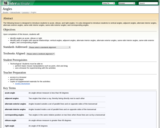
Students are introduced to all kinds of angles in this lesson plan, including acute, obtuse, right, vertical, adjacent, and corresponding among others.
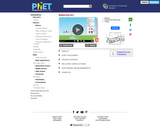
Play with objects on a teeter totter to learn about balance. Test what you've learned by trying the Balance Challenge game.
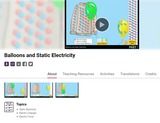
Grab a balloon to explore concepts of static electricity such as charge transfer, attraction, repulsion, and induced charge. (Phys 3.1, 3.2, 3.3)
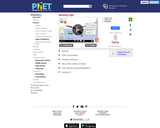
Explore bending of light between two media with different indices of refraction. See how changing from air to water to glass changes the bending angle. Play with prisms of different shapes and make rainbows.
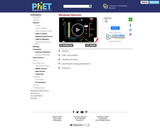
How does the blackbody spectrum of the sun compare to visible light? Learn about the blackbody spectrum of Sirius A, the sun, a light bulb, and the earth. Adjust the temperature to see the wavelength and intensity of the spectrum change. View the color of the peak of the spectral curve. (Phys 3.3)
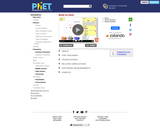
Build an atom out of protons, neutrons, and electrons, and see how the element, charge, and mass change. Then play a game to test your ideas!
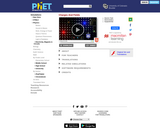
Arrange positive and negative charges in space and view the resulting electric field and electrostatic potential. Plot equipotential lines and discover their relationship to the electric field. Create models of dipoles, capacitors, and more!
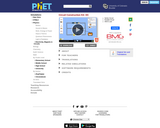
Experiment with an electronics kit! Build circuits with batteries, resistors, ideal and non-Ohmic light bulbs, fuses, and switches. Determine if everyday objects are conductors or insulators, and take measurements with an ammeter and voltmeter. View the circuit as a schematic diagram, or switch to a lifelike view.
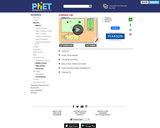
Investigate simple collisions in 1D and more complex collisions in 2D. Experiment with the number of balls, masses, and initial conditions. Vary the elasticity and see how the total momentum and kinetic energy change during collisions.
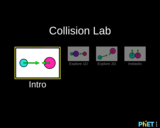
Use an air hockey table to investigate simple collisions in 1D and more complex collisions in 2D. Experiment with the number of discs, masses, and initial conditions. Vary the elasticity and see how the total momentum and kinetic energy changes during collisions.
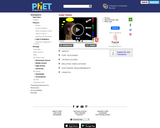
Make a whole rainbow by mixing red, green, and blue light. Change the wavelength of a monochromatic beam or filter white light. View the light as a solid beam, or see the individual photons.

Visualize the electrostatic force that two charges exert on each other. Observe how changing the sign and magnitude of the charges and the distance between them affects the electrostatic force.
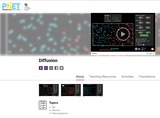
Mix two gases to explore diffusion! Experiment with concentration, temperature, mass, and radius and determine how these factors affect the rate of diffusion.

Explore how heating and cooling iron, brick, water, and olive oil adds or removes energy. See how energy is transferred between objects. Build your own system, with energy sources, changers, and users. Track and visualize how energy flows and changes through your system.

Learn about the conservation of energy at the skate park! Build tracks, ramps, and jumps for the skater. View the skater's kinetic energy, potential energy, and thermal energy as they move along the track. Measure the speed and adjust the friction, gravity, and mass.
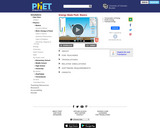
Learn about conservation of energy with a skater gal! Explore different tracks and view the kinetic energy, potential energy and friction as she moves. Build your own tracks, ramps, and jumps for the skater.
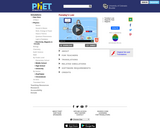
Investigate Faraday's law and how a changing magnetic flux can produce a flow of electricity! Best used as a demonstration and not a full lesson.

This simulator allows you to reshape pipes and observe changes in fluid flow speed, providing a hands-on way to understand fluid dynamics.
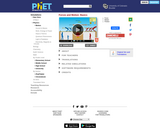
Explore the forces at work when pulling against a cart, and pushing a refrigerator, crate, or person. Create an applied force and see how it makes objects move. Change friction and see how it affects the motion of objects.